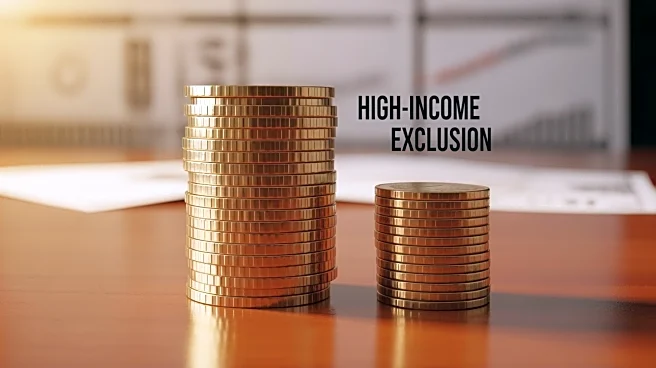What's Happening?
President Trump has proposed a plan to distribute 'tariff dividends' of at least $2,000 per person from tariff revenues, excluding high-income individuals. This proposal, reminiscent of the COVID-era Economic
Impact Payments, aims to reward taxpayers and potentially reduce national debt. However, the Committee for a Responsible Federal Budget (CRFB) warns that the plan would cost the federal government approximately $600 billion annually, far exceeding the projected $300 billion in annual tariff revenue. The CRFB's analysis suggests that the proposal could significantly increase the national deficit.
Why It's Important?
The proposal highlights the ongoing debate over fiscal policy and the use of tariff revenues. If implemented, the plan could exacerbate the national deficit, which is already nearing $2 trillion annually. The CRFB's analysis indicates that diverting all tariff revenue to these payments would limit the government's ability to use these funds for deficit reduction or debt repayment. This could have long-term implications for the U.S. economy, potentially increasing the federal debt to 134% of GDP by 2035 if the payments are made annually.
What's Next?
The proposal is likely to face scrutiny from policymakers and fiscal watchdogs concerned about its impact on the national deficit. Discussions around the feasibility and fiscal responsibility of such a plan are expected to continue, with potential adjustments to eligibility criteria or payment frequency to mitigate the financial impact. The Supreme Court's pending decisions on the legality of some tariffs could also influence the plan's viability.
Beyond the Headlines
The proposal reflects broader challenges in balancing economic stimulus with fiscal responsibility. It raises questions about the sustainability of using tariff revenues for direct payments and the potential need for comprehensive fiscal reform to address the growing national debt.











